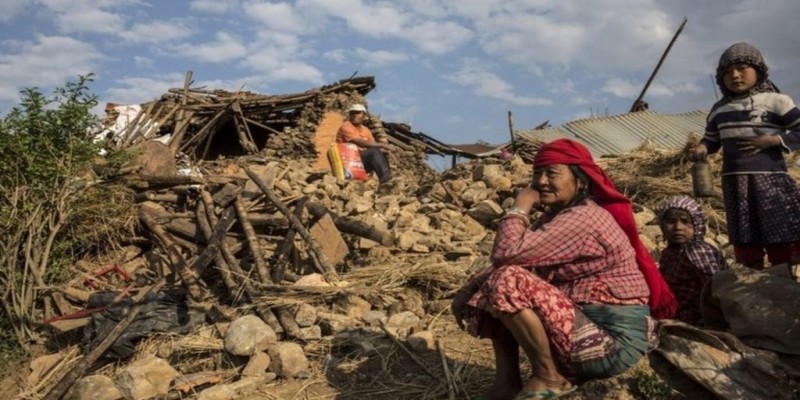
Media Monitoring of #NepalEarthquake - May 3
With the news on government announcing online deposit provision to Prime Minister’s Relief Fund, day 9 of the earthquake incident in Nepal is a mixed bag in terms of various reactions to relief activities; positive news on rescue of survivors and a negative reaction via Twitter to Indian media reporting of earthquake in Nepal. Some of the highlights of today’s media reporting are presented below:
Caution regarding outbreaks
With growing concern about epidemic outbreaks, some authorities claim that epidemic diseases like cholera cannot be directly caused by an earthquake but a public health concern in the aftermath. In order to spread general awareness about health tips after the earthquake, USAID Nepal has 4 basic tips: do not defecate out in the open; clean hands; find out if your water has been chlorinated; and compost or bury your solid food waste.
Emergency Health Care
Republica reports that a team of doctors from Red Cross has started emergency health care in Dhunche, district headquarters of Rasuwa after the affected victims were airlifted from different parts of the district. On the other hand, as Setopati reports that despite government’s announcement of free medical treatment of earthquake victims, private hospitals got treatment cost back only after a week of the incident.
Aid Management
Today’s media report additional aid support to Nepal with UK releasing 5.3 million pound to aid support package following UN flash appeal. Similarly, Ms. Mamata Banerjee, Chief Minister of West Bengal, India has donated 100,000 tents for the quake victims. For aid logistics management, Radio New Zealand reports that UN has urged Nepal to relax customs controls which it says are holding up deliveries of aid to survivors of last week's earthquake. Relief materials are still landing into Nepal with Republica reporting that a total of 151 flights from 35 countries laden with relief materials touched down at the Tribhuvan International Airport (TIA). Releasing that spinal cord treatment is the major challenge for health service providers; World Health Organization has mobilized its aid for long term spinal cord treatment after Nepal earthquake. Bhaktapur, a highly affected district has provided relief amount to the affected families through its six municipalities. Political parties have also allowed its cadres to distribute relief to the affected victims.
Reactions
Reaction against Indian media reporting of earthquake was most trended today on Twitter as The Hindustan Times reports that with #GoHomeIndianMedia being the top trending hashtag in Nepal. Nepalese Twitter users accused the Indian media of being insensitive to survivors, asking them irrelevant questions such as "How are you feeling?" and not helping those needing immediate medical aid. Other than that, other reactions were related to public dissatisfaction in Bhaktapur with no politicians visiting the affected people in 8 days. There is also realization that more tents are required for the affected victims and government lacks enough tents for immediate shelter as relief. Similarly, people at Gorkha are still waiting for relief support. With fear of continued aftershocks and more destruction in the valley, Setopatireports that 800,000 people left the Kathmandu valley to other districts. Public outrage over government’s lack of seriousness over relief efforts was also reflected in social media such as Twitter as an individual writes, “There is no need for a helipad. You just need will to land.” In order to address strengthened information system for humanitarian causes, Medium.compoints out Eight Critical Dimensions of Information EcoSystems: Information Needs, Information Landscpae, Production & Movement, Access Dynamism, Use of Information, Impact of Information, Social Trust and Influencers.
Rescue Efforts
Interestingly, despite government claims that survivors are difficult to find, BBC reports that 8 Britons stranded in a monastery were rescued by DFID’s emergency team. Similarly, according to OnlineKhabar.com, 3 individuals were successfully rescued from Sindhupalchowk. Ekantipur.com reports an interesting story of a centenarian rescued alive after 8 days from Nuwakot. BBC also reports successful stories of rescue efforts, some champions risking their own lives while rescuing others.
Life after Earthquake
To promote positivity during this difficult time, media have also started disseminating positive public messages such as an Indian singer Gaurav Dagaonkar dedicating a song for the earthquake victims. Nepali Times also covers a story of an elderly who faced two giant earthquakes in his lifetime. Oxfam America also presents a glimpse of life after earthquake through photo series. Car Free Times has also dedicated a Special Edition Nepal's earthquake with detailed pictures of devastation. An informative piece is published by The Economist regarding the scientific causes of why earthquakes occur.
Red Alert
With the death toll rising over 7000 and frequent aftershocks; Sunday morning itself facing 3 after-shocks and Mt. Everest shrinking a bit smaller (2.8 cm) after the earthquake, according to media reports, the days ahead are still challenging. Moreover, UNDP Project Officerspecializing in implementation of safe building codes claims that 80 percent of buildings are owner built and they employ masons not formally trained in building processes.
This has put forward a big question on necessity of managed reconstruction activities not only for mitigating this disaster but also planning ahead for being better prepared for other disasters in the future.






Comments(0)
No comments found.